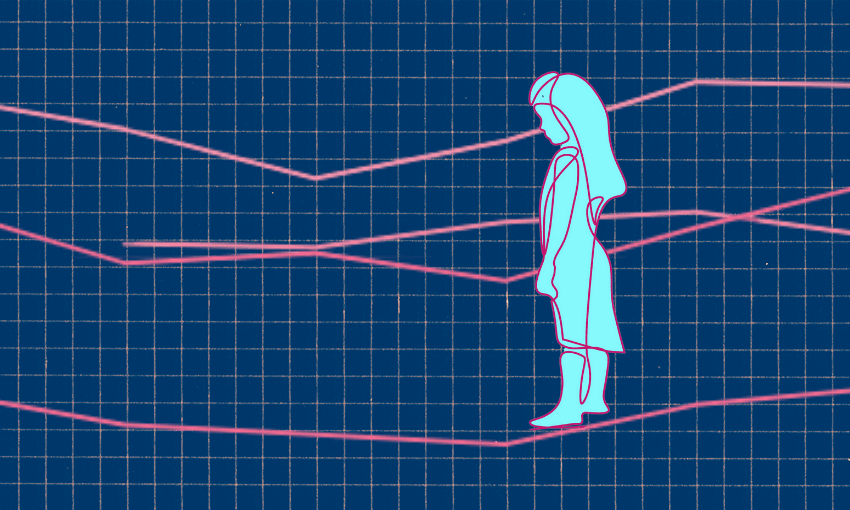The latest child poverty data shows all three of the government’s targets have been missed, as advocates call for urgent action, saying it will take more than economic growth to fix the problem.
The latest Stats NZ Child Poverty Report confirms what frontline workers, food banks and child poverty advocates have been warning for months – more children in Aotearoa are living in material hardship than two years ago. The figures for June 2023-June 2024, released today, show the government has failed to meet all three of its primary child poverty reduction targets, with material hardship rates now sitting at an estimated 13.4%, up almost a third from 10.5% in 2022 and a reversal of previous gains.
The official line is that “there has been no statistically significant change” in child poverty rates from last year, but the broader trend since 2021 tells a different story. The estimated number of children experiencing material hardship has risen from 144,100 in 2023 to 156,600 in 2024, an increase of 12,500 in one year. Taking the margin of error into account, Stats NZ says this is not a statistically significant change. However, the rate has risen a statistically significant 2.4 percentage points from the year ended June 2021, and the gap is even bigger compared with 2022, with an estimated 36,000 more children living in material hardship. A household that lacks six or more essential items from the DEP-17 index, the likes of fresh fruit or vegetables, heating and medical care, is considered to be living in material hardship.
As in previous years, the figures show Māori and Pasifika children, as well as disabled children, are disproportionately affected by poverty, with one in every 4.5 Māori children, one in every 3.5 Pasifika children and one in every five disabled children experiencing material hardship. Similarly, NZ Health Survey data released last year showed that more than half of Pasifika children and one in three Māori children lived in households where food often or sometimes ran out, which was highlighted in the Salvation Army’s annual state of the nation report last week.
There was also no "statistically significant change" to the two other primary child poverty reduction targets, with 12.7% of children (150,000) living in households with less than 50% of the median household income before housing costs were deducted, compared to 12.2% in 2023, and 17.7% of children (208,000) living in households with less than 50% of the median household income after housing costs were deducted, the same figure as in 2023.
The previous government set a 2023/24 target to reduce material hardship to 9%, in line with the Child Poverty Reduction Act 2018. But under the new coalition government, that target was quietly raised to 11%, effectively shifting expectations and allowing an estimated 17,350 more children to fall into hardship without triggering a “missed target”.
In response to the release of today’s stats, child poverty reduction minister Louise Upston defended the government’s record, saying in a press release that child poverty remained “an ongoing challenge” and blaming the prolonged cost of living crisis for families’ worsening conditions. The government last year rejected advice from Treasury officials that $3 billion per year would be required in order to achieve its child poverty reduction targets, with Upston saying it was focusing on the drivers of child poverty. She said a focus on growing the economy, improving health and education outcomes and getting more households into work would bring down child poverty, and has pointed to tax cuts, inflation control and childcare rebates as key government initiatives.
Speaking after the release of the report at Stats NZ's Auckland office, Sarita Davis, chief executive of Child Poverty Action Group (CPAG), said the government’s framing of the new data was “misleading”. “The numbers are increasing, and we need to do something urgently," she said. "We’re missing clear policies that are specific to child poverty. What we have instead is a broad economic strategy that assumes growth will lift families out of hardship, but that’s not how poverty reduction works.
“The reality is that thousands more children are struggling. The data only runs to June 2024, and we know things have gotten even tougher since then," she said.
Critics argue that the government’s response has been insufficient and lacking urgency. CPAG and other advocacy groups have called for immediate action, including restoring and expanding food-in-schools programmes like Ka Ora, Ka Ako, lifting benefit levels to ensure families can cover essential costs, reversing benefit sanctions that disproportionately impact sole-parent and low-income households, and committing a specific budget allocation toward meeting child poverty reduction targets.
“Economic growth does not automatically reduce child poverty,” said Davis. “The government needs a plan. Right now, it doesn’t have one.”
The Salvation Army, meanwhile, called on the government to "move immediately to increase income support settings and hardship assistance to levels that lift children out of hardship". In a press release in response to the release of the new data, Bonnie Robinson, director of the Salvation Army's social policy and parliamentary unit, said, "Children in low-income households should not be the ones paying the highest price to meet government goals of bringing the books back into order."
Chief children's commissioner Claire Achmad called on the government to invest in children in the budget on May 22. “The budget needs to bring practical support into the homes of children in poverty, by lifting basic incomes, urgently addressing food insecurity and housing affordability – particularly for families who are renting – and other measures that reduce material hardship," she said in a press release. “The government’s own growth strategy is dependent on maximising skilled labour, education and workforce participation, which will be hard to achieve without addressing childhood poverty. Other targets, across things like education and youth justice, are also at risk."
Stats NZ has confirmed that persistent child poverty measures – tracking whether children remain in hardship over multiple years – will be introduced in 2027, following the scrapping of a key longitudinal study last year. However, child advocates warn that without urgent intervention, conditions will continue to deteriorate.
“We’re at a tipping point,” said Davis. “The numbers don’t lie. We need real action, not just political talking points.”
This is Public Interest Journalism funded by NZ On Air.

